Citropten

Citropten structure
|
Common Name | Citropten | ||
|---|---|---|---|---|
| CAS Number | 487-06-9 | Molecular Weight | 206.195 | |
| Density | 1.2±0.1 g/cm3 | Boiling Point | 388.1±42.0 °C at 760 mmHg | |
| Molecular Formula | C11H10O4 | Melting Point | 146-149 °C(lit.) | |
| MSDS | Chinese USA | Flash Point | 176.3±27.9 °C | |
| Symbol |

GHS07 |
Signal Word | Warning | |
Use of CitroptenCitropten (5,7-Dimethoxycoumarin) is a coumarin isolated from bergamot oil. Citropten (5,7-Dimethoxycoumarin) has an antiproliferative activity against A2058 human melanoma cell line[1][2]. |
| Name | 5,7-Dimethoxycoumarin |
|---|---|
| Synonym | More Synonyms |
| Description | Citropten (5,7-Dimethoxycoumarin) is a coumarin isolated from bergamot oil. Citropten (5,7-Dimethoxycoumarin) has an antiproliferative activity against A2058 human melanoma cell line[1][2]. |
|---|---|
| Related Catalog | |
| References |
| Density | 1.2±0.1 g/cm3 |
|---|---|
| Boiling Point | 388.1±42.0 °C at 760 mmHg |
| Melting Point | 146-149 °C(lit.) |
| Molecular Formula | C11H10O4 |
| Molecular Weight | 206.195 |
| Flash Point | 176.3±27.9 °C |
| Exact Mass | 206.057907 |
| PSA | 48.67000 |
| LogP | 2.06 |
| Vapour Pressure | 0.0±0.9 mmHg at 25°C |
| Index of Refraction | 1.557 |
| Storage condition | 2-8°C |
|
SECTION 1: Identification of the substance/mixture and of the company/undertaking Product identifiers Product name: 5,7-Dimethoxycoumarin REACH No.: A registration number is not available for this substance as the substance or its uses are exempted from registration, the annual tonnage does not require a registration or the registration is envisaged for a later registration deadline.
CAS-No.: 487-06-9 Relevant identified uses of the substance or mixture and uses advised against Identified uses: Laboratory chemicals, Manufacture of substances SECTION 2: Hazards identification Classification of the substance or mixture Classification according to Regulation (EC) No 1272/2008 Skin sensitisation (Category 1), H317 For the full text of the H-Statements mentioned in this Section, see Section 16. Classification according to EU Directives 67/548/EEC or 1999/45/EC Xi IrritantR43 For the full text of the R-phrases mentioned in this Section, see Section 16. Label elements Labelling according Regulation (EC) No 1272/2008 Pictogram Signal wordWarning Hazard statement(s) H317May cause an allergic skin reaction. Precautionary statement(s) P280Wear protective gloves. Supplemental Hazardnone Statements Other hazards - none SECTION 3: Composition/information on ingredients Substances Synonyms: Citropten Limettin Formula: C11H10O4 Molecular Weight: 206,19 g/mol CAS-No.: 487-06-9 EC-No.: 207-646-4 Hazardous ingredients according to Regulation (EC) No 1272/2008 ComponentClassificationConcentration 5,7-Dimethoxy-2-benzopyrone CAS-No.487-06-9Skin Sens. 1; H317<= 100 % EC-No.207-646-4 Hazardous ingredients according to Directive 1999/45/EC ComponentClassificationConcentration 5,7-Dimethoxy-2-benzopyrone CAS-No.487-06-9Xi, R43<= 100 % EC-No.207-646-4 For the full text of the H-Statements and R-Phrases mentioned in this Section, see Section 16 SECTION 4: First aid measures Description of first aid measures General advice Consult a physician. Show this safety data sheet to the doctor in attendance. If inhaled If breathed in, move person into fresh air. If not breathing, give artificial respiration. Consult a physician. In case of skin contact Wash off with soap and plenty of water. Consult a physician. In case of eye contact Flush eyes with water as a precaution. If swallowed Never give anything by mouth to an unconscious person. Rinse mouth with water. Consult a physician. Most important symptoms and effects, both acute and delayed The most important known symptoms and effects are described in the labelling (see section 2.2) and/or in section 11 Indication of any immediate medical attention and special treatment needed no data available SECTION 5: Firefighting measures Extinguishing media Suitable extinguishing media Use water spray, alcohol-resistant foam, dry chemical or carbon dioxide. Special hazards arising from the substance or mixture Carbon oxides Advice for firefighters Wear self contained breathing apparatus for fire fighting if necessary. Further information no data available SECTION 6: Accidental release measures Personal precautions, protective equipment and emergency procedures Use personal protective equipment. Avoid dust formation. Avoid breathing vapours, mist or gas. Ensure adequate ventilation. Avoid breathing dust. For personal protection see section 8. Environmental precautions Do not let product enter drains. Methods and materials for containment and cleaning up Pick up and arrange disposal without creating dust. Sweep up and shovel. Keep in suitable, closed containers for disposal. Reference to other sections For disposal see section 13. SECTION 7: Handling and storage Precautions for safe handling Avoid contact with skin and eyes. Avoid formation of dust and aerosols. Provide appropriate exhaust ventilation at places where dust is formed. For precautions see section 2.2. Conditions for safe storage, including any incompatibilities Store in cool place. Keep container tightly closed in a dry and well-ventilated place. Specific end use(s) A part from the uses mentioned in section 1.2 no other specific uses are stipulated SECTION 8: Exposure controls/personal protection Control parameters Components with workplace control parameters Exposure controls Appropriate engineering controls Handle in accordance with good industrial hygiene and safety practice. Wash hands before breaks and at the end of workday. Personal protective equipment Eye/face protection Face shield and safety glasses Use equipment for eye protection tested and approved under appropriate government standards such as NIOSH (US) or EN 166(EU). Skin protection Handle with gloves. Gloves must be inspected prior to use. Use proper glove removal technique (without touching glove's outer surface) to avoid skin contact with this product. Dispose of contaminated gloves after use in accordance with applicable laws and good laboratory practices. Wash and dry hands. The selected protective gloves have to satisfy the specifications of EU Directive 89/686/EEC and the standard EN 374 derived from it. Body Protection Complete suit protecting against chemicals, The type of protective equipment must be selected according to the concentration and amount of the dangerous substance at the specific workplace. Respiratory protection For nuisance exposures use type P95 (US) or type P1 (EU EN 143) particle respirator.For higher level protection use type OV/AG/P99 (US) or type ABEK-P2 (EU EN 143) respirator cartridges. Use respirators and components tested and approved under appropriate government standards such as NIOSH (US) or CEN (EU). Control of environmental exposure Do not let product enter drains. SECTION 9: Physical and chemical properties Information on basic physical and chemical properties a) AppearanceForm: crystalline Colour: white b) Odourno data available c) Odour Thresholdno data available d) pHno data available e) Melting point/freezingMelting point/range: 146 - 149 °C - lit. point f) Initial boiling point and no data available boiling range g) Flash pointno data available h) Evapouration rateno data available i) Flammability (solid, gas) no data available j) Upper/lowerno data available flammability or explosive limits k) Vapour pressureno data available l) Vapour densityno data available m) Relative densityno data available n) Water solubilityno data available o) Partition coefficient: n- no data available octanol/water p) Auto-ignitionno data available temperature q) Decompositionno data available temperature r) Viscosityno data available s) Explosive propertiesno data available t) Oxidizing propertiesno data available Other safety information no data available SECTION 10: Stability and reactivity Reactivity no data available Chemical stability Stable under recommended storage conditions. Possibility of hazardous reactions no data available Conditions to avoid no data available Incompatible materials Strong oxidizing agents Hazardous decomposition products Other decomposition products - no data available In the event of fire: see section 5 SECTION 11: Toxicological information Information on toxicological effects Acute toxicity no data available Skin corrosion/irritation no data available Serious eye damage/eye irritation no data available Respiratory or skin sensitisation Germ cell mutagenicity Human lymphocyte Sister chromatid exchange Carcinogenicity IARC:No component of this product present at levels greater than or equal to 0.1% is identified as probable, possible or confirmed human carcinogen by IARC. Reproductive toxicity no data available Specific target organ toxicity - single exposure no data available Specific target organ toxicity - repeated exposure no data available Aspiration hazard no data available Additional Information RTECS: Not available photosensitivity, To the best of our knowledge, the chemical, physical, and toxicological properties have not been thoroughly investigated. SECTION 12: Ecological information Toxicity no data available Persistence and degradability no data available Bioaccumulative potential no data available Mobility in soil no data available Results of PBT and vPvB assessment PBT/vPvB assessment not available as chemical safety assessment not required/not conducted Other adverse effects no data available SECTION 13: Disposal considerations Waste treatment methods Product Offer surplus and non-recyclable solutions to a licensed disposal company. Dissolve or mix the material with a combustible solvent and burn in a chemical incinerator equipped with an afterburner and scrubber. Contaminated packaging Dispose of as unused product. SECTION 14: Transport information UN number ADR/RID: -IMDG: -IATA: - UN proper shipping name ADR/RID: Not dangerous goods IMDG: Not dangerous goods IATA:Not dangerous goods Transport hazard class(es) ADR/RID: -IMDG: -IATA: - Packaging group ADR/RID: -IMDG: -IATA: - Environmental hazards ADR/RID: noIMDG Marine pollutant: noIATA: no Special precautions for user no data available SECTION 15 - REGULATORY INFORMATION N/A SECTION 16 - ADDITIONAL INFORMATION N/A |
CHEMICAL IDENTIFICATION
HEALTH HAZARD DATAACUTE TOXICITY DATAMUTATION DATA
|
| Symbol |

GHS07 |
|---|---|
| Signal Word | Warning |
| Hazard Statements | H317 |
| Precautionary Statements | P280 |
| Personal Protective Equipment | Eyeshields;Gloves;type N95 (US);type P1 (EN143) respirator filter |
| Hazard Codes | Xi |
| Risk Phrases | 43 |
| Safety Phrases | 36/37 |
| RIDADR | NONH for all modes of transport |
| WGK Germany | 3 |
| RTECS | GN6530000 |
| Precursor 10 | |
|---|---|
| DownStream 5 | |
|
Simultaneous determination of 16 phenolic constituents in Spatholobi Caulis by high performance liquid chromatography/electrospray ionization triple quadrupole mass spectrometry.
J. Pharm. Biomed. Anal. 102 , 110-8, (2014) Spatholobi Caulis, the vine stem of Spatholobus suberectus Dunn, has been widely used in traditional Chinese and folk medicines for treatment of irregular menstruation, blood deficiency and rheumatalg... |
|
|
Fatal kavalactone intoxication by suicidal intravenous injection.
Forensic Sci. Int. 249 , e7-11, (2015) Kavalactones are a group of compounds found in kava, a beverage or extract prepared from the rhizome of the kava plant (Piper methysticum). Traditionally kava extracts have been used for their anxioly... |
|
|
Relative photomutagenicity of furocoumarins and limettin in the hypoxanthine phosphoribosyl transferase assay in V79 cells.
Chem. Res. Toxicol. 22(9) , 1639-47, (2009) Furocoumarins are phototoxic and photomutagenic natural plant constituents found in many medicinal plants and food items. Because plants contain mixtures of several furocoumarins, there is a need for ... |
| 5,7-Dimethoxy-2H-1-benzopyran-2-one |
| MFCD00006870 |
| 5,7-dimethoxy-coumarin |
| EINECS 207-646-4 |
| Limettin |
| Citropten |
| 5,7-Dimethoxy-2H-chromen-2-one |
| 2H-1-Benzopyran-2-one, 5,7-dimethoxy- |
| 5,7-dimethoxychromen-2-one |
| 5,7-Dimethoxycoumarin |
| 5,7-Dimethoxy-chromen-2-one |
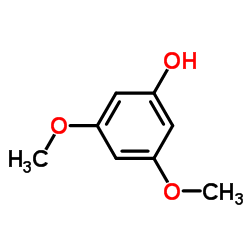 CAS#:500-99-2
CAS#:500-99-2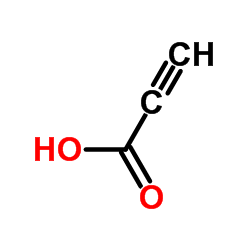 CAS#:471-25-0
CAS#:471-25-0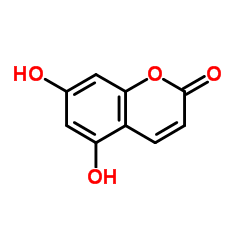 CAS#:2732-18-5
CAS#:2732-18-5 CAS#:74-88-4
CAS#:74-88-4 CAS#:708-76-9
CAS#:708-76-9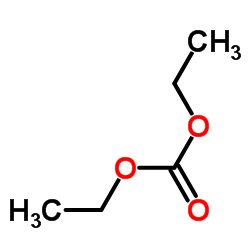 CAS#:105-58-8
CAS#:105-58-8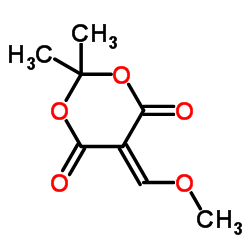 CAS#:15568-85-1
CAS#:15568-85-1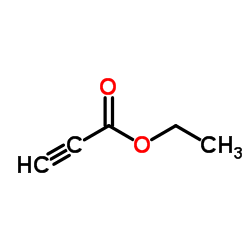 CAS#:623-47-2
CAS#:623-47-2 CAS#:121449-70-5
CAS#:121449-70-5 CAS#:82235-61-8
CAS#:82235-61-8 CAS#:486-28-2
CAS#:486-28-2 CAS#:108-73-6
CAS#:108-73-6 CAS#:64-19-7
CAS#:64-19-7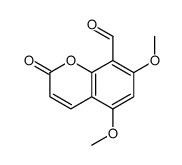 CAS#:88140-30-1
CAS#:88140-30-1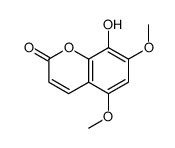 CAS#:61899-44-3
CAS#:61899-44-3
